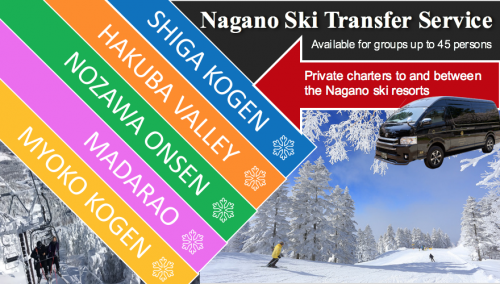SEARCH RESULTS: 2024
Koka Ninja House
The Koka Ninja House, is an authentic ninja house built during the Edo era and the only remaining house available to the public where ninja lived. It was the residence of the Mochizuki family, a family of ninjas, and as such, contains many tricks, traps, and secret escape paths for you to explore. Built over 300 years ago in the Koka countryside, the Ninja House offers visitors a unique opportunity to immerse themselves in what life must have been like for a Koka Ninja. Visitors to the house can also view a collection of ninja weapons, tools, and artifacts. Want to experience Nagoya’s unique culture for yourself? Based in Central […]
Noritake Garden
Famed throughout Japan and around the world as Japan’s premier manufacturer of porcelain and china tableware, Noritake originated in Nagoya over 100 years ago and maintains an impressive museum and gallery in Nagoya called Noritake Garden. The 34,000 square-meter garden is divided into three zones—the Culture Zone, the Commercial Zone, and the Historical Zone—all of which are surrounded by beautifully manicured landscaping and lush greenery. All buildings on the grounds are wheelchair accessible. The garden houses a gallery, shop, craft center, and several restaurants allowing visitors the opportunity to dine on Noritake chinaware, shop for their own collection, or simply soak up the scenery of the garden. In the craft […]
Midland Square and Outdoor Observation Deck Sky Promenade
At 247 meters, Midland Square is Nagoya’s tallest building. The shimmering skyscraper offers visitors high-end shopping, a cinema, a Toyota Automobile Showroom, and an underground pedestrian network that connects to the city. Situated on the top floors is the Sky Promenade—the highest outdoor observatory in Central Japan. This semi-open-air observation deck allows you a stunning 360-degree view of the city. If you visit the Sky Promenade with one of our guides on a tour of Nagoya, they will happily point out all the city’s landmarks as well as more distant locations. Additionally, there is a BBQ terrace on the Sky Promenade, allowing visitors to grill steak, sausages, chicken, and even […]
Nagoya Culture Path
The Nagoya Culture Path is an area rich in well-preserved historical estates from some of Nagoya’s wealthiest residents from the Meiji Era through the early Showa Era (1868 -1930). Once home to middle and lower-class samurai, the area between Nagoya Castle and Tokugawa Garden transitioned into a neighborhood popular with entrepreneurs, missionaries, journalists, and artists as the country transitioned away from its feudal past. Many of the residences remain today and are now considered designated cultural properties. The neighborhood serves as a concentrated area of architectural marvels and a living museum of Japan’s path to modernization. Today, visitors can enter the well-preserved homes and stroll the gardens of several of […]
Naegi Castle Ruins
Naegi Castle was constructed over 400 years ago and sits 432 meters above the beautiful Kiso River in Gifu Prefecture. Like many castles throughout Japan, Naegi castle was dismantled in 1871 during the Meiji Era as a symbol of the end of the feudal system of government. Today, all that remains are the impressive stone foundations atop Mt. Takamori. Though little more than ruins remain of this impressive structure, the natural and man made foundation stones combine to give these castle ruins a truly unique and impressive appearance, earning Naegi Castle the nickname of “the Machu Picchu of the East.” Naegi Castle was rare in that during the approximately 260 […]
The Snow Walls of Tateyama-Kurobe
Rising over 3000 meters above sea level, Mt Tate is one of Japan’s highest mountains. One of several peaks in the North Japan Alps that reaches that height, the dramatic alpine landscape is subject to heavy snow through winter. Often referred to as the ‘Roof of Japan’, the region is inaccessible from mid-November until April at which time humans venture back and with great effort and ingenuity, re-carve the road from Bijodaira to Murodo Station. — Where is the Tateyama-Kurobe Alpine Route? — How to Get to the Snow Walls — The Best Time to See the Snow Walls and What to Wear — How the Snow Walls are Made […]
Hikone Castle
Hikone Castle is one of the twelve Japanese castles that still retain their original keeps. Additionally, Hikone Castle is one of only five castles to have been designated the status of a National Treasure (along with Inuyama, Matsumoto, Himeji, and Matsue castles). The samurai lord Naomasa Ii was gifted the area now known as Hikone by Tokugawa Ieyasu after his service in the Battle of Sekigahara. However, Naomasa Ii passed away before the castle was ever constructed. The castle was completed in 1622 after nearly 20 years of construction and was the seat of power for the Ii clan for nearly 260 years. In the late 1800’s, as a symbol […]
Aburahi Shrine
With a history spanning more than 1,100 years, Aburahi Shrine was revered by people of all kinds throughout the ages. It now plays an important role as a filming location for many historical movies and TV dramas including “Rurouni Kenshin: The Final (るろうに剣心 最終章).” The name “Aburahi” (油日), directly translating to “blazing sun,” comes from a legend that a god of war descended from a nearby mountain causing the mountain’s peak to glow as brightly as the sun. During the Sengoku Era (Warring States Period) of the 15th and 16th centuries, the shrine was the primary place of worship for many Koka Ninja. Today, companies that are related to oil […]
Walk the Tokaido Trail
During Japan’s Edo Period (1603 to 1868) the Tokaido was the most important of the five major routes (including the Nakasendo, Koshu Kaido, Nikko Kaido, and Oshu Kaido) as it provided the most direct link between Kyoto and the new capital of Tokyo, then called “Edo.” Stretching over 500 kilometers between the two cities, the name Tokaido translates as “東 / to = eastern; 海 / kai = sea; 道 / do = road,” or the “The Eastern Route by the Sea.” Most travelers made the journey on foot and, in ideal weather and conditions, the entire Tokaido Trail could be traversed in about 10-12 days, however, if conditions were […]





